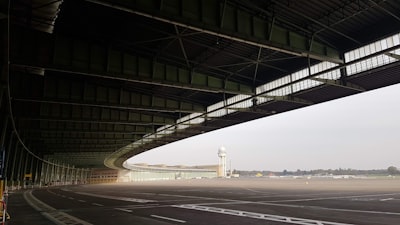Overview
An aerobridge, also known as a jet bridge, jetway, airbridge, or passenger boarding bridge (PBB), is a movable, enclosed walkway that connects airport terminals directly to the cabin doors of aircraft. It allows for efficient, sheltered, and secure boarding and disembarkation of passengers from commercial airplanes.
Design and Functionality
Aerobridges are engineered to extend, retract, raise, lower, and pivot, accommodating the diverse sizes, door positions, and entry heights of commercial aircraft. The bridge typically comprises a telescopic corridor supported by an elevation mechanism mounted on wheels or a fixed anchor. The outer end interfaces seamlessly with aircraft doors, often incorporating safety features such as airtight sealing and non-slip flooring.
Types and Adaptability
There are several types of aerobridges, including:
- Fixed bridges: Attached permanently to the airport terminal, often with a limited range of motion.
- Movable bridges: Multi-segmented, with telescopic and pivoting capabilities.
- Dual bridges: Serve two doors of wide-body or double-decker aircraft, facilitating faster passenger flows. Aerobridges may serve a range of aircraft, from narrow-body to the largest models such as the Airbus A380.
Safety Considerations
Operation of aerobridges involves stringent safety protocols to prevent damage to aircraft and injury to staff and passengers. Operators undergo specialized training to align the bridge precisely with aircraft doors, taking into account variable factors such as weather, aircraft size, and terminal positioning. Misalignment or equipment malfunction can result in structural damage to the aircraft or bridge, interruption of airport operations, and substantial logistical impacts.
Impact on Passenger Experience
Aerobridges enhance the passenger experience by providing:
- Protection from weather and the airside environment
- Improved accessibility for persons with reduced mobility
- Increased security by limiting direct contact with the tarmac
Evolution and Alternatives
Since the 1950s, aerobridges have replaced many traditional mobile stairs, especially in modern airports in developed countries. In some regions, remote stands and buses are still used for boarding, especially where infrastructure or gate limitations exist.
Regulatory Oversight
International standards for aerobridge operation and safety are overseen by aviation authorities such as the International Civil Aviation Organization (ICAO) and local regulatory bodies. Regular inspections and maintenance are mandated to ensure ongoing operational integrity.
Conclusion
Aerobridges represent a crucial intersection of airport infrastructure, passenger service, and aviation safety. As aircraft become larger and air travel grows, the demand for adaptable, reliable, and secure boarding solutions continues to increase globally.

Comments
No comments yet. Be the first to comment!